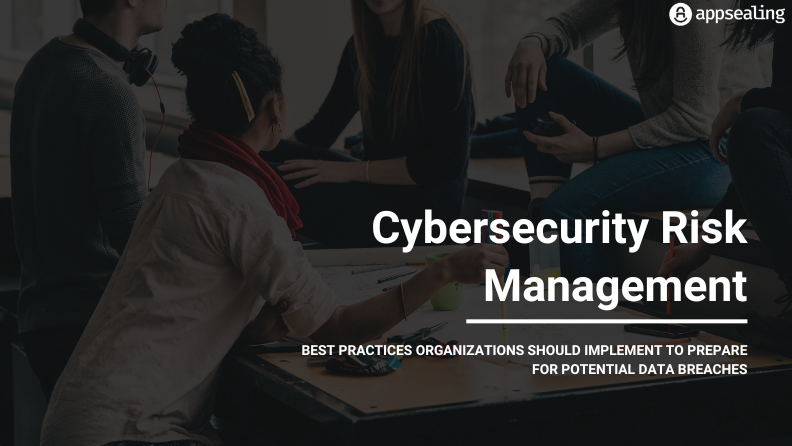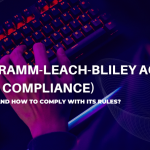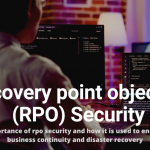Managing cyber security risk across the enterprise is a daunting task that requires a comprehensive and well-planned strategy. With the rapidly evolving threat landscape and the increasing reliance on technology, organizations of all sizes and industries face a growing number of cybersecurity risks. Cybersecurity management is more critical than ever, from data breaches and cyber-attacks to regulatory compliance and business continuity.
What is Cybersecurity Risk Management
Cybersecurity risk management is the proactive process of identifying, assessing, and responding to potential online threats to an organization’s information systems. This can include various activities such as penetration testing (checking for weaknesses in systems that could be exploited), vulnerability assessments (identifying and assessing risks), incident response planning (preparing for how to react in the case of a breach or attack), and security awareness training (teaching employees how to spot and avoid risks. A continuous process, Cybersecurity risk management should be revisited and updated regularly to protect against new and evolving threats.
Benefits of Cybersecurity Risk Management
Effective cyber risk management requires a holistic approach that includes identifying, assessing, and mitigating risks across the enterprise. This includes identifying and prioritizing the most critical assets and systems, understanding the potential threats and vulnerabilities, and implementing appropriate controls and countermeasures to mitigate the risks.
Comprising four quadrants, cyber security risk management helps organizations to understand better, anticipate, and respond to potential threats and attacks.
The four quadrants of a cyber-security risk management strategy are Map, Monitor, Mitigate, and Manage.
- Map: This quadrant focuses on identifying and understanding the organization’s assets and the potential vulnerabilities an attacker could exploit. This includes identifying sensitive data, critical systems, and potential entry points for an attacker.
- Monitor: This quadrant focuses on the ongoing surveillance of the organization’s IT environment to detect any suspicious activity or potential threats. This includes implementing security monitoring tools, such as intrusion detection systems and security information and event management (SIEM) systems, to detect and alert potential threats.
- Mitigate: This quadrant focuses on taking action to reduce the impact of a potential threat or attack. This can include implementing security controls such as firewalls, antivirus software, and intrusion prevention systems to block potential threats and incident response plans to respond to a security incident quickly.
- Manage: This quadrant focuses on maintaining the effectiveness of the organization’s cybersecurity program over time. This includes regularly reviewing and updating security policies and procedures, conducting security audits and testing, and providing training and awareness to employees to help them understand their role in protecting the organization’s information systems.
5 C’s of Cyber Security
The 5 C’s of Cyber Security provide a comprehensive approach to managing cybersecurity risks, considering the dynamic and ever-changing nature of technology, threats and legal compliance. It helps organizations consider all aspects of cybersecurity and ensure they are prepared to manage and mitigate the risks.
The 5 C’s of Cyber Security are a useful framework for understanding and managing the various aspects of cybersecurity risk.
They are:
Change:
This refers to the ongoing changes in technology, business processes, and the threat landscape. Organizations need to be able to adapt to these changes to maintain an effective cybersecurity posture. This includes regularly reviewing and updating security policies and procedures and keeping abreast of new technologies and threat intelligence.
Compliance:
This refers to the need to adhere to legal, regulatory, and industry-specific standards and guidelines for cybersecurity. Organizations must understand and comply with relevant laws and regulations, such as HIPAA, PCI-DSS, and the General Data Protection Regulation (GDPR), to protect sensitive information and maintain customer trust.
Cost:
This refers to the financial aspects of cybersecurity, including the cost of implementing and maintaining security controls and the cost of a potential data breach. Organizations need to balance the cost of cybersecurity measures with the potential financial impact of a breach.
Continuity:
This refers to the ability of an organization to maintain normal business operations in the face of a cybersecurity incident. This includes having incident response plans and regularly testing them to ensure that the organization can quickly and effectively respond to a security incident.
Coverage:
This refers to the extent of the protection provided by an organization’s cybersecurity measures. Organizations must ensure that their security controls provide adequate coverage for all their assets, including sensitive data, critical systems, and remote workers.
How to Develop a Cybersecurity Risk Management Plan?
In today’s digital age, Cybersecurity Risk Management is a need of the hour for any organization that wants to protect itself and its customers from increasing cyber threats. A well-crafted Cybersecurity Risk Management Plan is essential in protecting an organization’s valuable assets and maintaining the trust of its customers.
Developing a Cybersecurity Risk Management Plan is crucial for organizations to protect against potential cyber threats and data breaches. Organizations face many cyber threats with the increasing reliance on technology and the proliferation of connected devices. Cyber attacks are becoming more frequent and sophisticated, and a data breach’s potential financial and reputational damage can be significant.
According to recent statistics, the number of cyber attacks is rising. In 2020, over 4.1 billion records were exposed to data breaches, an increase of more than 64% from the previous year. Ransomware attacks also increased by 118% in the same year. Phishing and social engineering attacks are also becoming more common, with 91% of cyber attacks starting with phishing emails.
A Cybersecurity Risk Management Plan helps organizations identify and prioritize potential threats and implement measures to mitigate or control those risks. It is a continuous process of evaluating and improving an organization’s cybersecurity posture to protect against potential attacks and data breaches.
The plan should include the following key elements:
-Identifying and understanding the organization’s assets and vulnerabilities
-Implementing security controls to prevent or reduce the impact of potential threats
-Monitoring the organization’s IT environment for suspicious activity
-Having incident response plans in place to quickly and effectively respond to a security incident
The cybersecurity risk management process is a continuous cycle that helps organizations identify, assess, and mitigate potential threats to their information systems. The process includes the following steps:
Identify assets:
The first step in the process is identifying the organization’s assets, including sensitive data, critical systems, and potential entry points for an attacker. This might include identifying the organization’s network infrastructure, servers, endpoints, and cloud-based services. For example, an organization might identify its customer data stored in a database as a critical asset that needs to be protected.
Identify threats:
The next step is identifying potential threats to the organization’s assets. This might include external threats such as cyber-attacks and internal threats such as employee negligence or malicious insiders. For example, an organization might identify a threat from phishing attacks targeting employees to steal login credentials.
Identify consequences:
The third step is to identify the potential consequences of a security incident, such as data loss, reputational damage, or regulatory fines. For example, an organization might identify that a data breach could result in the loss of customer trust and negatively impact the organization’s reputation.
Identify solutions:
The fourth step is to identify solutions to mitigate or control the identified risks. This might include implementing security controls such as firewalls, antivirus software, and intrusion prevention systems. For example, an organization might identify that implementing multi-factor authentication and employee training on identifying phishing emails can help to mitigate the threat of phishing attacks.
Implement solutions:
The fifth step is to implement the identified solutions. This might include configuring security controls, developing incident response plans, and providing security awareness training to employees. For example, an organization might implement multifactor authentication and employee training on identifying phishing emails to mitigate the threat of phishing attacks.
Monitor progress and effectiveness:
The final step is to monitor the progress and effectiveness of the implemented solutions. This includes regularly reviewing security logs, conducting vulnerability assessments, and testing incident response plans. For example, an organization might monitor the effectiveness of its multifactor authentication and employee training by regularly reviewing security logs and conducting phishing simulation exercises.
Standards and Frameworks that Mandate a Cyber Risk Management Approach
Several standards and frameworks mandate a cyber risk management approach for organizations. Some of the most commonly used ones include:
NIST Cybersecurity Framework (CSF):
Developed by the National Institute of Standards and Technology (NIST), the CSF provides a framework for organizations to manage cybersecurity risk. It is a voluntary framework that provides a common language and framework for managing cybersecurity risk and aligning with industry standards and guidelines.
ISO/IEC 27001:
This international standard provides a framework for information security management. It includes a set of best practices for managing information security risks and is widely used by organizations of all sizes and industries.
COBIT 5:
Developed by ISACA, the Control Objectives for Information and related Technology (COBIT) 5 frameworks are used to manage IT governance and IT management. It provides a governance structure and control objectives that organizations can use to manage IT risks.
PCI-DSS:
The Payment Card Industry Data Security Standard (PCI-DSS) is a set of security standards that organizations must comply with to accept, process, store or transmit credit card information. It includes security controls, and procedures organizations must implement to protect cardholder data.
SOC 2:
SOC 2 (Service Organization Control 2) is an auditing framework that evaluates a service organization’s controls over information systems relevant to security, availability, processing integrity, confidentiality or privacy. It is used to demonstrate the security of a service provider’s systems and infrastructure to customers and regulators.
HIPAA:
The Health Insurance Portability and Accountability Act (HIPAA) is a set of regulations protecting patient health information’s privacy and security. Organizations that handle protected health information (PHI) must implement security controls and procedures to protect that information.
These standards and frameworks provide a set of best practices and guidelines for organizations to manage their cyber risks and comply with regulations. Organizations are encouraged to implement these standards and frameworks to protect their information systems, data, and reputation.
Best Practices for Cybersecurity Risk Management
Know Your IT Environment and Assets:
The first step in conducting a cybersecurity risk assessment is a clear understanding of your IT environment and assets. This includes identifying the systems, applications, and data critical to your organization’s operations. Technical examples include conducting a regular hardware and software inventory, mapping network connections and identifying all remote access points.
Develop a Robust Cybersecurity Risk Management Strategy:
A comprehensive cybersecurity risk management strategy is crucial for identifying, assessing, and mitigating cyber risks. This strategy should include clear policies, procedures and guidelines for identifying, assessing, mitigating and reporting cyber risks. Technical examples include implementing security controls such as firewalls, intrusion prevention systems, and antivirus software.
Security assessments:
These are about identifying and evaluating security risks in an organization’s IT environment. There are several types of security assessments that organizations can conduct to test for various security risks, including:
– Data leakage assessment:
This tests for vulnerabilities that allow sensitive data to be exfiltrated from an organization’s systems. This might include testing for misconfigured servers, unsecured data storage devices, and weak access controls. For example, an organization might conduct a data leakage assessment to test whether sensitive data can be exfiltrated from a database using SQL injection.
– Unauthorized access assessment:
This tests for vulnerabilities that could allow unauthorized access to an organization’s systems. This might include testing for weak passwords, unpatched systems, and misconfigured servers. For example, an organization might conduct an unauthorized access assessment to test whether an attacker can access a system using a known vulnerability in a web application.
– Malicious code injection assessment:
This tests for vulnerabilities that could allow malicious code to be injected into an organization’s systems. This might include testing for SQL injection, cross-site scripting (XSS), and cross-site request forgery (CSRF) vulnerabilities. For example, an organization might conduct a malicious code injection assessment to test whether an attacker can inject malicious code into a web application using a SQL injection vulnerability.
– External penetration testing:
This simulates an external attacker attempting to gain unauthorized access to an organization’s systems, networks and applications to identify vulnerabilities that a real attacker could exploit. For example, an organization might conduct an external penetration test to see if an attacker can exploit a vulnerability in a web application to gain access to sensitive data.
– Internal penetration testing:
This simulates an internal attacker attempting to gain unauthorized access to an organization’s systems, networks and applications to identify vulnerabilities that a malicious insider could exploit. For example, an organization might conduct an internal penetration test to see if an attacker can exploit a vulnerability in a web application to gain access to sensitive data.
– Social engineering assessment:
This simulates a social engineering attack, such as phishing or pretexting, to identify vulnerabilities in an organization’s people and processes. For example, an organization might conduct a social engineering assessment to see if employees will give their login credentials to a fake IT support email.
Prioritize Cyber Risks:
After identifying potential risks, it’s important to prioritize them based on their likelihood and potential impact. This will help your organization to focus on the most critical risks and allocate resources accordingly. Technical examples include conducting regular vulnerability assessments and penetration testing to identify potential vulnerabilities and prioritize them based on severity.
Implement Ongoing Risk Assessments:
Cybersecurity risks are constantly evolving, so it’s important to conduct ongoing risk assessments to identify new or emerging risks. Technical examples include implementing security information and event management (SIEM) systems to monitor the network for suspicious activity continuously and conducting regular penetration testing to identify new vulnerabilities.
Enforce Strict Security Protocols:
Implementing strict security protocols, such as access controls, encryption, and multifactor authentication, can help to reduce the risk of a security incident. Technical examples include enforcing password policies, implementing role-based access controls, and encrypting sensitive data at rest and in transit.
Test and Review Continuously:
Regularly testing and reviewing your cybersecurity risk management processes, policies and procedures are important to ensure they are working as intended and to identify any vulnerabilities that might have been missed during initial assessments. Technical examples include performing regular penetration testing, vulnerability scanning and performing incident response drills.
Overall, these best practices for cybersecurity risk assessment provide a comprehensive approach to identifying, assessing, and mitigating cyber risks. By following these best practices, organizations can better protect their IT environment and assets and minimize the potential impact of a security incident.
Final Thoughts
In conclusion, managing cyber security risk across the enterprise is a challenging task that requires a well-planned and comprehensive strategy. By identifying and assessing risks, implementing appropriate controls and countermeasures, and continuously monitoring and testing the effectiveness of the security posture, organizations can better protect themselves from the ever-evolving cyber threat landscape.
AppSealing: The AppSealing mobile app security platform is the perfect solution for developers and companies who want to keep their mobile applications safe and secure. AppSealing is a robust tool that offers a variety of features to help keep your app safe, including instant security alerts, regular scans, and more. With AppSealing, you can rest assured knowing that your app is protected against the latest security threats.






